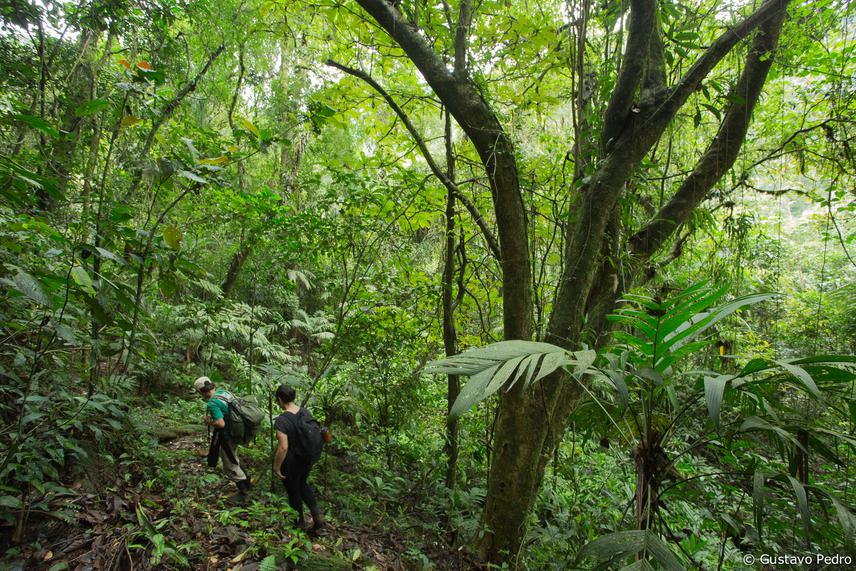Sara Lucía Colmenares Trejos
The aim of my work is study how palms are responding to an altitudinal variation gradient to identify factors driving community functional distribution and shifts.

In the field with the guide (around 500 m above sea level, and 4 km deep into the forest). ©Gustavo Pedro, Tres Picos State Park
In my project, I test the trait – environment responses along altitudinal variation and its influence in palm species distribution and community assembly. We expect to elucidate the effect of habitat filtering, and combined gradient effects over species selection or plastic variation, at intra and inter specific level. Results can identify species prone to variation in distribution ranges and habitats, as well as, its impact at community and forest levels, with environmental variations.
I chose a functional approach to assess species responses and distribution across elevation gradients, because this method gives integrative insights into the way community ecology is made and understood. It is integrative because through functional key traits it is possible to elucidate the emergent responses and effects produced by the interaction between species and environment, and species-to-species relationships at intra and interspecific level. This approach also integrates population dynamics and ecosystem functioning, leading the identification of responses to the multiple sources of variation across different spatial and temporal scales.
The work is developed in Atlantic Forest, a recognized threatened area because of huge deforestation and changes in land use. Developing studies that provides information about this system, in still conserved areas, have an invaluable information for understanding and application of management strategies for conservation and restoration. In this particular research, the presence of endemic palms, endangered species, and some species considered as indicators of healthy forest and, the fact that for some species, adult plants are very scarce at field, with very low seed production or seedlings, raises the question about how these plants will go to persist in the forest. There is not enough ecological information, or at least not for the non-commercial but surely ecological important wild palm species. My work contributes to frame the species and community functional response and variability, and to understand how the community is affected by several environmental conditions at different spatial and temporal scales. Finally, works on conservation are generally focused on taxonomic diversity and description, leaving aside the functional diversity and structure, which can be more informative when assessing species responses to threatening conditions. For that reason, this work is a contribution, with a trait-based approach, for biodiversity conservation viewpoints for palms in Atlantic Forest.